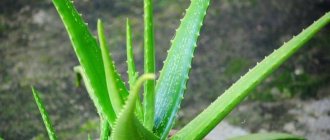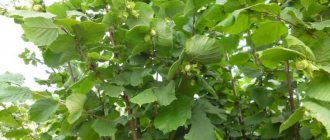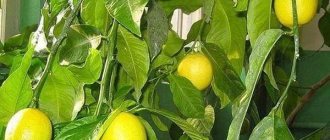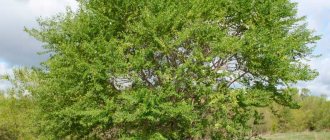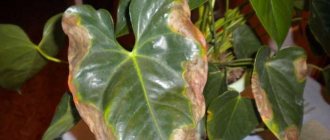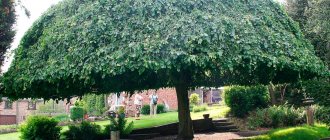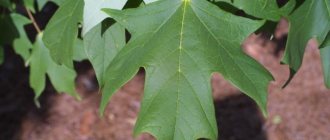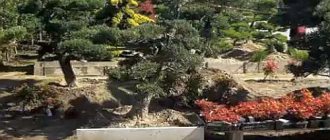The money tree or crassula is characterized by easy care and rapid growth. Many beginners give their preference to the plant precisely because of its simplicity and high decorative value. Its popularity is also fueled by the fact that, according to popular belief, the money tree brings family happiness and financial well-being to the home. But even with such undemandingness, the gardener should be aware of the possible difficulties of growing, in particular, why the leaves of the money tree turn red.
Causes
The vegetative organs of many plants contain red pigment. As a rule, in deciduous plants it appears in the fall, when chlorophyll, which is responsible for the green color, is destroyed.
A change in the color scheme of indoor plants also indicates changes in the biological process. The phenomenon is not always harmless and can be caused by serious reasons.
Watering
Under natural conditions, Crassula will grow in drought. Domestic varieties also require little moisture, but require proper watering.
If the leaves not only acquire a red tint, but also become wrinkled and begin to wither, this is most likely the result of the soil drying out. If overmoistened, the leaf blade becomes violet or purple in color.
Other signs of overwatering:
- soft leaves;
- trunk bending in all directions;
- sagging stems.
Lighting
In summer, the money tree is often placed on the balcony or outside. The lighting becomes more intense even when the pot is placed in partial shade. An abundance of sunlight can cause the color of the leaf plate of the Crassula to change to a red tint.
At other times of the year, flowers are often placed on windowsills on the south side. The direct action of sunlight causes the Crassula to change the green color of the foliage to red.
A change in color is often a sign of severe sunburn. The main symptoms of the condition are:
- the leaf blade becomes soft and sluggish;
- the money tree outwardly looks tired and depressed;
- the leaves remain wrinkled even in the case of moderate and regular soil moisture;
- the plate turns red around the edges, below, in the center;
- depressed dots or whitish spots appear on the leaves;
- the shade of the trunk changes.
It is worth considering that in certain types of Crassula, the above shade of the trunk and redness of the leaf blade is a feature of the variety.
Other reasons
The flower exhibits a hue reaction to being moved to a new location. This is stress for the plant. An unexpected move from a dimly lit room to a windowsill has the same effect on Crassula.
It is important to gradually accustom the money tree to a new place of residence or growing conditions.
A sharp change in temperature conditions also becomes a stressful situation for the money tree. This happens when a plant “lives” outside in the summer, and is brought indoors for the winter.
The temperature factor quickly affects the appearance of the flower. The leaves take on a red tint. But quickly enough and on its own, without the help of a grower, the fat plant returns to its normal state.
Another reason for color fluctuations is improper feeding. Too nutritious soil and excessive fertilization are not suitable for Crassula. It is optimal to comply with the following standards:
- use substrate intended for cacti;
- Balance the mineral components in the soil, since “too much” causes great harm to the plant.
In the absence of fertilizing, the leaf plate does not turn red, but in the case of excess nutrients, this phenomenon occurs often.
Pests
Pests that attack Crassula:
- mealybugs and rootbugs;
- scale insects and false scale insects;
- spider and greenhouse mites;
- nematodes
The mealybug is 3-5 mm long. Settles in the axils of leaves. They fight it with a directed stream of air. Then the plant is rubbed with tincture of garlic or calendula.
The horse bug settles in the ground on the root part, which makes it difficult to detect. Easily crawls from one pot to another. To get rid of it, a stream of water is directed at the root. Treatment with chemical solutions “Fufanon” or “Aktellik” is possible.
Scale insects and false scale insects settle on the trunk and leaves. They are difficult to recognize because they are the same color as the plant. These pests are not affected by drugs, so they are destroyed by scraping. Then the treatment is carried out with garlic tincture with vodka. You can wash with kerosene.
Spider mites and greenhouse mites settle on young shoots. The reason for their occurrence is dryness. To get rid of them, you need to water the plant with cold water. It is allowed to use infusions of garlic, potatoes or chamomile.
Nematodes settle on the root part of the plant. The affected crop begins to grow poorly or stops development altogether. During transplantation, the root is inspected and the affected part is removed.
Features of the variety or species
There are types of Crassula that naturally have leaves with burgundy, brick or red rims. For these varieties, this condition is considered normal.
Something similar happens with home culture. After the conditions are as close to natural as possible, the internodes of the crop become short and the leaves turn red around the perimeter. This is a completely natural process.
Focusing on wild species, scientists have developed varieties of money trees with leaves of colors other than the classic green. Crassula Ovata has quite spectacular and interesting varieties with patterns of red shades on the leaf blades. These include:
- Gollum and the Hobbit. Only the tops of the “tubes” are colored red.
- Minr. The beautiful and compact appearance is widespread. With a large amount of sunlight, the leaf blade acquires an unusual purple hue.
- Tricolor. The variety is characterized by a rich and fairly wide rim of bright red-pink color, which gradually becomes paler towards the center of the leaf blade.
- Sunset. The plant of this variety appears orange from a distance. But in reality, light green leaves have a yellow or scarlet rim.
Crassula Ovata is often confused with Tree-like. But for the latter, red leaves are quite rare. This is usually a sure sign that the plant is unhealthy.
There are other varieties of money tree:
- The purple color of the leaves is quite typical for Crassula atropurpurea. Such varieties may have a green color, but at the same time there is always a bright shade of edging.
- Crassula cooperii has an unusual leaf blade covered with ink spots.
- Most of the beautiful creeping or spiky Crassulas have leaves that are purple, brown, pink or red.
Only if the fat plant is in bright sun (street, balcony, south-facing window) does the leaves turn red. If the lighting is diffuse, variegated species, on the contrary, become duller, green ones lose their bright border.
When located in the back of the room, where there is no artificial lighting, the leaves acquire a gray or garnet hue.
Pests attacked
Yellowish, reddish spots
Most likely, your Crassula has become a victim of a scale insect
- harmful insects that suck the juice from the leaves. This diagnosis will be confirmed if the leaves begin to turn yellow and fall off, or you see the insects themselves (round red “plaques”).
Your actions:
- Place the money tree away from other flowerpots. Carefully inspect all house flowers (including bouquets) for harmful “plaques” hiding on the inside of the leaves.
- We remove adult insects manually. The pot with the tree should be placed in the sink (if the plant is small) or in the bathtub. Using a small brush or cotton swab dipped in an insecticide solution (or alcohol, kerosene, soap solution), remove each pest and wash it down the drain.
- Treat all leaves with soapy water. But this should only be done if the infection is minimal.
- If everything is bad (or you just don’t want to take risks), immediately spray the flowerpot with an insecticide solution. This substance is considered moderately dangerous, so all work should be carried out on an open balcony so that relatives do not inhale it. And you should protect yourself by covering your face with a scarf, your hands with gloves, and your eyes with glasses.
The treatment should be repeated a week later. And if necessary, then another 7 days after that.
"Cotton wool" in the leaf axils and/or at the base of the plant
White coating is traces of mealybug
, whitish winged insects.
Remove them mechanically (the same as scale insects), and treat the plant with either a soap solution or an insecticide.
Yellowish spots + cobwebs
A spider mite has come to your Crassula leaves
.
These insects are very small, black or red. The more web they lay, the worse it is, because pests hide their future offspring in the web.
Along with aphids, gray rot (a fungal disease) often attacks flowerpots.
If there are few cobwebs, the flowerpot can be sprayed with a soap solution. If there is a lot - acaricide (poison from ticks). Flower growers highly praise “Aktofit”, “Fitoverm”, “Aktellik”.
By the way, ticks are afraid of dry air. So if you make it a rule to frequently spray your house plants, these pests will never bother you.
More about proper care
, thanks to which you can minimize the risks of all the diseases listed above, you can hear in this video:
At home, the money tree is very popular due to its high decorative properties and ease of care. However, sometimes the lush green foliage, which is so pleasing to the eye of gardeners, begins to crumble, turn black or wither. When the first signs of a problem appear, it is important to take immediate action.
What to do?
If the money tree has healthy and elastic leaf plates and stems, there is no need to do anything. Except when you like a solid green plant. In this case, it is enough to remove the pot from a well-lit place and place it deeper into the room / on another window.
If the plant gets sunburn (the leaves turn red), ulcerated areas and dents appear. Restoration will take a lot of time, and it will not be possible to return the previous decorative effect. You will need to pinch off unsightly leaves and cut cuttings.
If the tree begins to turn red as a result of the soil drying out, it is worth organizing more frequent watering and ensuring that the earthen ball is completely saturated with moisture. In case of severe waterlogging, it is necessary to optimize watering and take into account the needs of the plant when moisturizing.
In some cases, it may be necessary to adjust the conditions for keeping the fat woman:
- Fertilize only with products suitable for cacti and strictly during the growing season;
- choose a more suitable substrate;
- do not place the pot with the plant in a draft;
- change container;
- Be sure to lay a layer of drainage at the bottom of the pot;
- make holes in the container to drain excess moisture.
The leaves of the tree are thick, strong and large
This state of the plant is the dream of every owner, but it is he who should try to ensure that the fat plant always looks like this. There is a belief among people that the condition of the leaves of a money tree can be used to judge the amount of money the owner has. Therefore, for your financial well-being, it is important to create all the necessary conditions for the plant.
If you follow simple rules, the money tree will not turn red and crumble.
Here are a few simple rules that will help organize proper tree care:
- First of all, provide moderate watering. Before watering again, you should let the soil dry out. The tree will not grow if there is a tray filled with water under the pot.
- When replanting, the root system should be completely freed from the ground. Check their condition and trim off any rotten areas.
- When feeding, you should use preparations designed for fertilizing cacti and other succulents.
- The pot should have good drainage.
- The ground where the fat plant is to grow must contain brick chips, sand, and crushed coal. This composition will protect the roots from rotting.
- Spraying is carried out with settled warm water.
- The lighting of the tree should be sufficient, but without direct sunlight hitting the foliage. The best place in winter may be a window sill in the southeast of the house.
- The money talisman should be sent out into the fresh air for the summer.
- In winter, you should not place the flower near heating appliances. He needs coolness with temperatures ranging from +18 to +24.
The plant will respond to good care with the beauty of its foliage.
Crassula restoration
During recovery, provide your money tree with optimal care. Keep in mind that the damaged plant’s protective properties have been greatly weakened. And in order to survive, the pet needs additional help.
Apply the following methods (they will help return the leaves of the crassula to a beautiful green hue):
- move the pot to a place protected from light so that direct rays of the sun do not fall on the crassula;
- If there is no dimly lit room, cover the windows with gauze or curtains.
If the leaf blades not only turn red, but also intensively crumble, the problem is really serious. In this case, moving the pot to a new location will not be enough. To speed up the recovery of the fatty acid, use biostimulants.
Timely hydration is also important. Do not allow the soil to dry out or become waterlogged. Under normal weather conditions, water the tree more than once every 7 to 10 days. If it is hot outside and indoors, moisturize twice a week.
How to deal with limp and red leaves on Crassula?
Flower growers who prefer not to suffer from the complex care of ornamental and exquisite plants opt for the Crassula. Among people, this indoor plant is called the money tree. It is loved for its ease of care and evergreen leaf color. But, despite its unpretentiousness, it can also get sick.
The main problems that the owner of such a plant may encounter are red or limp leaves. Each of them is worth considering in more detail.
Prevention measures
Creating optimal conditions will help avoid reddening of the leaf plate. To do this, just follow a few simple preventive measures:
- optimize watering, that is, moisten only after checking the condition of the soil;
- during replanting, clean the roots from the soil as carefully as possible so as not to damage them;
- If, when transferring to a new pot, you find rotten areas on the root system, be sure to cut them off and treat the cut area with activated carbon powder;
- Fertilize only with properly selected preparations intended for succulents and cacti;
- Place a drainage layer on the bottom of the pot;
- Spray the foliage extremely rarely and only with pre-settled water;
- In the summer, take the plant outside.
Why do leaves wither and fall off?
There are too many reasons for this condition. If the leaves wither and dry out, then most likely it is due to high temperature and exposure to sunlight on the leaves.
It is worth noting that the plant copes best with the heat in the fresh air. Therefore, after the frost ends and the temperature normalizes, it can be safely sent to the fresh air until autumn. It is very important that the plant is not exposed to heavy rain outside. From a large amount of moisture, the root system can begin to rot, which over time will lead to the leaves beginning to wither, turn pale and fall off.
In such cases, you cannot do without replanting the plant. All soil is removed from the roots and replaced with fresh soil. The roots themselves should be carefully checked for rot and all damaged areas should be removed.
How to avoid the problem
If the owner takes proper care of the plant, its leaves will not turn red and subsequently fall off.
There are several simple rules that will help provide proper care for Crassula:
- 1. Initially, the plant needs to be provided with normal watering. Before carrying out the next procedure, you should let the soil in the pot dry a little. The tree will stop growing if there is a full pan of water under the pot.
- 2. At the time of transplantation, the root system should be freed as much as possible from the old soil. The rhizomes are carefully checked, and the infected areas are cut off.
- 3. When feeding, you need to use preparations that are intended for treating cacti and other succulents.
- 4. The pot must have good drainage.
- 5. Spraying should be carried out only with well-settled and moderately warm water.
- 6. In summer, the plant must be sent to fresh air.
If certain pests are observed on the Crassula that can lead to plant disease, redness and wilting, it is necessary:
- 1. Examine the plant carefully and remove all damaged leaves (both small and large).
- 2. Then take a cotton swab and moisten it with medical alcohol, then wipe the leaves.
- 3. If the percentage of damage to the plant is large enough, it is necessary to treat the fat plant using special chemicals.
- 4. After chemical treatment, it is better to transplant the plant into new soil.
By adhering to these simple rules of care, each owner will receive a magnificent tree, which is an excellent talisman of well-being, prosperity, good luck, happiness and prosperity.
Facebook


